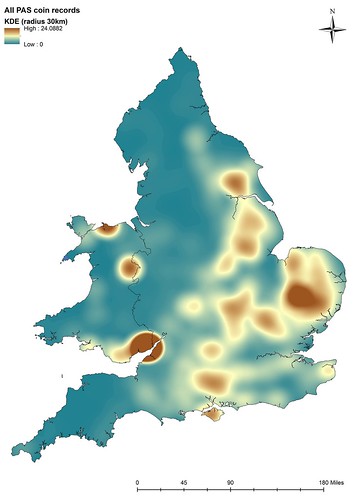Server check!
You are on the training database
Advice for researchers

Portable Antiquities Scheme: A Guide for Researchers (PDF) contains essential information for anyone wishing to use PAS data in their research.
Our database is a large online collection of archaeological artefacts from all periods, which can be used to examine a wide range of research questions. Hundreds of research projects now use PAS data, including undergraduate and postgraduate dissertations, PhD theses, conference papers, and large scale research projects.
To use PAS data most effectively, researchers must take into account how and why the data has been collected. These 'biases' affect the distributions of archaeological objects that have been recorded.
This guide aims to:
- Discuss the factors that shape amateur-collected data;
- Identify a range of techniques to show how these factors affect the spatial distribution of finds.
The guide is divided into sections covering sampling/collection theory and techniques for exploring amateur-collection bias.
Contents
- Metal detecting and the PAS introduces the collectors who provide the majority of the finds recorded by the PAS. It looks at the history of metal detecting and archaeology, and considers how this affects finds reporting today.
- Understanding amateur collection bias is divided into seven stages, each exploring one aspect of sampling bias in amateur collection.
- Methods for exploring bias in the PASD presents 5 themes of analysis, each using a series of examples taken from across England and Wales to illustrate different ways of exploring the PAS data.
- Approaching an analysis of PAS data highlights the key questions that need to be considered before incorporating the PAS data into your research.
Pilot study looking at finds from Hampshire, Northamptonshire and the Isle of Wight.


